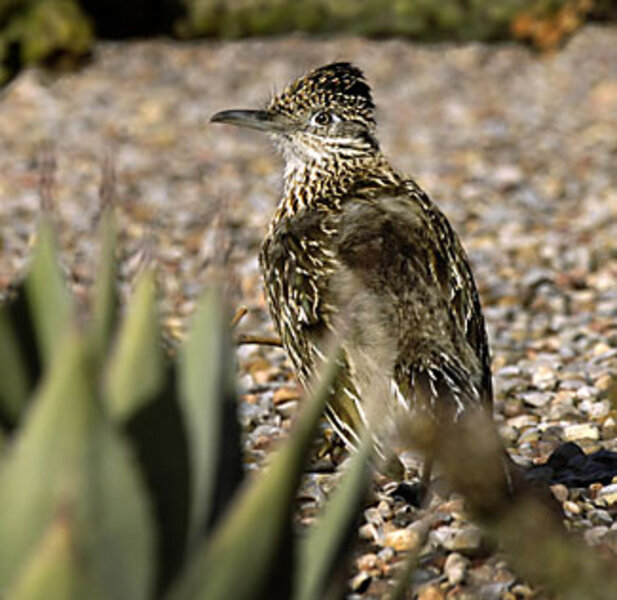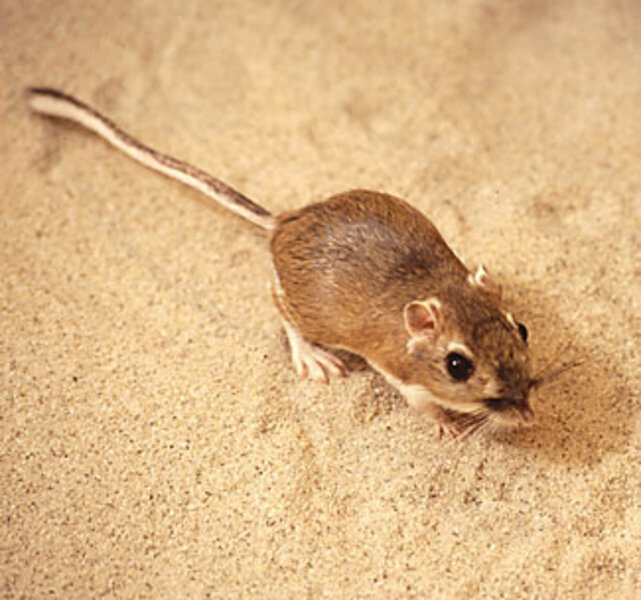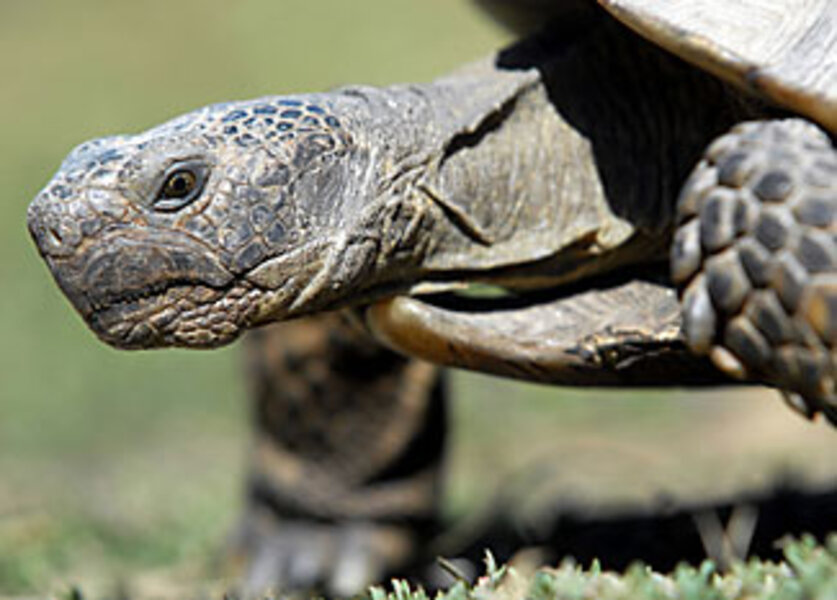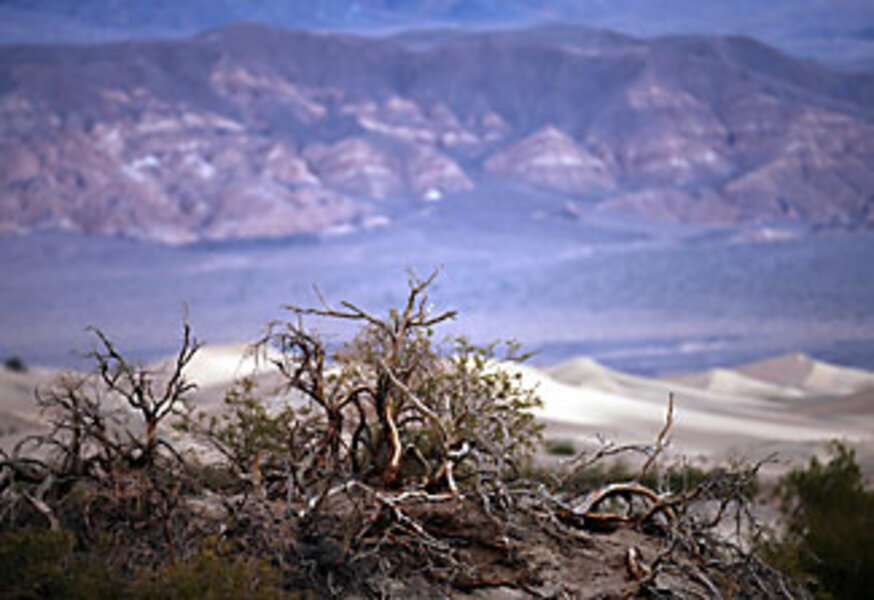Wildlife that can take the heat
Loading...
It contains the lowest place in North America, reaching 282 feet below sea level. The temperature once reached 134 degrees F., and in the summer the ground can be hot enough to fry an egg. It averages less than two inches of rain each year. It's called Death Valley – but this national park near the California-Nevada border is teeming with life.
"In theory there should be nothing that should live in Death Valley," says Jim Cornett, a desert ecologist, consultant, and author of books on Death Valley. But, in fact, "there's quite a bit of life."
From kangaroo rats to roadrunners, many animals have found ways to adapt to the harsh conditions. But that doesn't mean it's easy. Here are the survival secrets of five animals that thrive in Death Valley.
Kangaroo rat
The kangaroo rat can go its whole life without ever drinking water. But "they require just as much moisture as any other animal does," Mr. Cornett said. This means it has to find unusual ways to get water, as well as ways to conserve it.
The kangaroo rat is one of many animals that escape the heat of the desert by going underground. They dig burrows and spend up to 23 hours of every day there where it's much cooler.
At night, when a rat comes to the surface to get food, it bounds across the desert like a kangaroo, finding seeds that it can bring back to its burrow and eat. These seeds help the rat get enough moisture to survive.
Foraging for food can be dangerous, though, since the rat's predators are looking for food as well. Fortunately, the rat has an unusually large chamber in its ear that helps it hear low-frequency sounds, such as a crawling rattlesnake or an approaching owl.
The inside of a kangaroo rat's nose is a lower temperature than the rest of its body so that when it exhales, the moisture in its breath condenses in the nasal passages, saving water. It also has powerful kidneys, so it doesn't need to use a lot of water to rid its body of waste.
"It doesn't know if water is going to be around, so it has a whole variety of strategies for dealing with that," says Peter Siminski, director of conservation and education at the Living Desert wilderness preserve, in Palm Desert, Calif.
Kit fox
The kit fox lives in some of the least hospitable areas of the desert. It is about the size of a small house cat. It survives by eating kangaroo rats, as well as jack rabbits, lizards, scorpions, insects, and some plants.
Like the kangaroo rat, the kit fox gets the moisture it needs from what it eats. It also spends a lot of time underground. It lives in a den year-round and spends the hot days there cooling off. It comes to the surface at night to look for food.
"Kit foxes are incredibly curious," Mr. Cornett says. "They come into campgrounds and campsites all the time."
Sidewinder
The sidewinder is the most common rattlesnake in Death Valley. It's called a "sidewinder" because of the way it moves. "It's almost a rolling motion," says Bill Hayes, a biology professor at Loma Linda University in California. "It kind of rolls a portion of its body sideways and forward at the same time."
Sidewinders take advantage of other animals to survive. They can't dig burrows, but they find burrows that kangaroo rats have made and occupy them, forcing the rats to dig new holes. When it's hot, they stay in the burrows or buried in sand all day and come out at night. And like many other animals in Death Valley, they don't need to drink water to survive. They get the water they need from the food they eat, such as lizards and rodents.
Roadrunner
Roadrunners can fly if they need to, but it's more common to see them run. They're active during the day, although they'll head for the shade during the hottest parts of summer days.
They get most of their moisture from eating insects and small animals, including rattlesnakes, scorpions, and tarantulas.
During cold desert nights, roadrunners allow their body temperatures to drop to conserve energy. In the morning, they find a sunny spot and fluff their feathers to expose dark skin that can absorb the sun's heat and warm them up.
"The change between night and day is huge," Mr. Siminski says. "If it's getting up to 100 [degrees F.] during the day, it could be 50 [degrees F.] at night."
Desert tortoise
The desert tortoise lives in the higher elevations of Death Valley. The valley floor is too hot and dry for it to find food.
Even at the higher elevations, the tortoise spends 95 percent of its life underground, escaping from the extremes of heat and cold, says Kristin Berry, a research scientist in ecology and wildlife for the US Geological Survey. She studies the desert tortoise.
Desert tortoises come out of their burrows, caves, or rock shelters when it's time to mate, when food is available, or when it rains.
They eat mostly wildflowers and other plants. Their bladders act like canteens, storing water during drier seasons. When it rains, they find water to drink and fill up their bladders.
"If it rains, they come out, and they take every opportunity they possibly can to drink," Dr. Berry said, although they don't come out often during their winter hibernation period.









